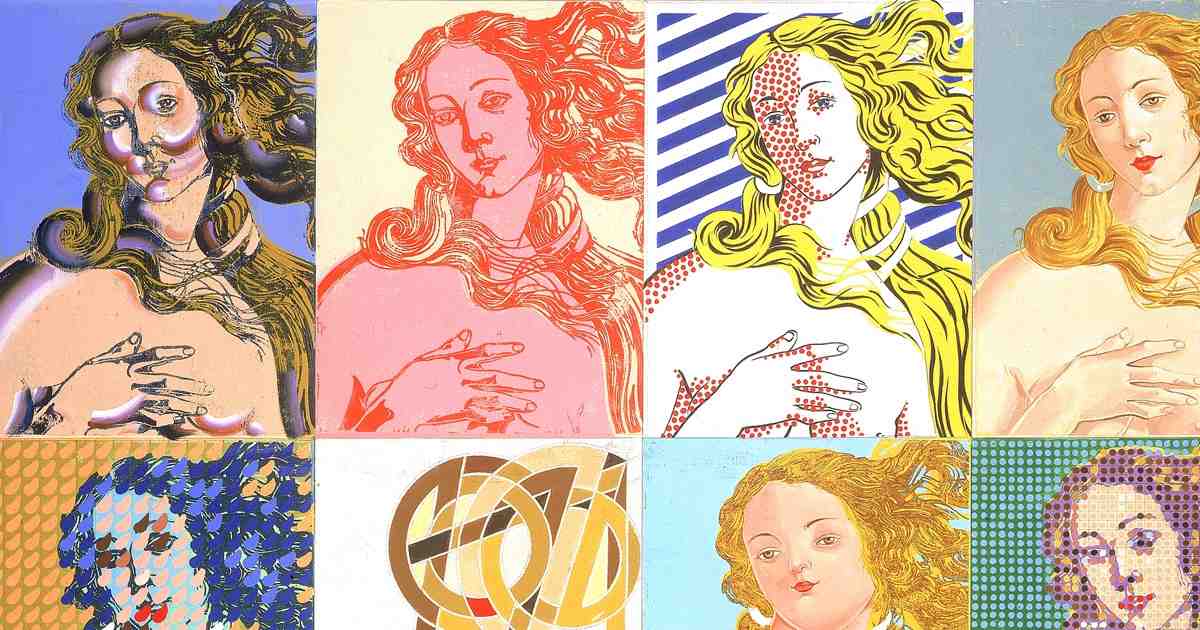Balancing Valued Tradition With Innovation
When your product is a beloved classic, how do you update it to attract new customers?
Topics
Frontiers
News
- Non-Oil Growth Powers UAE’s Stronger-Than-Expected 2026 Outlook
- Musk’s xAI Raises $20 Billion in Upsized Funding Round
- CES 2026 Day 2 Signals AI’s Shift From Platforms to Physical Systems
- Saudi Arabia Nears Universal Internet Adoption, GASTAT Survey Shows
- Saudi Arabia to Allow FDI From Feb 1; Already Home to 20 of the World’s Top 30 Banks
- Twitter and Pinterest Founders Unveil a New App to Counter Social Media’s Harms

Paul Giovanopoulos/theispot.com
Sooner or later, most successful companies face the challenge of updating a cherished old product. Make no changes, and you risk becoming irrelevant to new customers. Change too much, and you may alienate your most loyal customers.
So how do you leverage a historically strong brand with sensitivity to heterogeneous customer preferences? To explore this question, we studied Italian opera companies, which face this dilemma every season. Many of the best-loved operas in the repertoire are more than 150 years old, and the most devoted operagoers have fairly traditional tastes. However, if opera companies hew to their preferences, they may limit their cultural relevance and fail to develop new audiences.
Our analysis of ticket sales for 2,627 Italian opera productions from 1989 to 2011, and interviews with 15 artistic directors of opera houses, yielded some insights into successfully managing the tension between tradition and innovation that can be applied by anyone with a beloved product they need to update.
Requiem for a New Coke
The more iconic the product, the more challenging it is to update, as we saw with the saga of “new Coke,” Coca-Cola Co.’s ill-fated attempt in 1985 to relaunch its flagship beverage with a sweeter taste. Consumers in blind taste tests had endorsed the change, but after customers protested, the company had to continue selling the classic version of the product alongside the new one.
Opera companies, too, perpetually court disaster when they try to update beloved works. Consider two recent productions — of Puccini’s Madame Butterfly and Bizet’s Carmen — that were reinterpreted in novel ways but were received very differently. Loyal operagoers liked Madame Butterfly relocated to contemporary East Asia. But they panned the new Carmen, which ended with the title character killing Don José, her estranged lover, instead of being killed by him as in the original opera.
To understand the differences in how these and other updated productions have been received, we assembled a detailed database of the staging strategies of thousands of performances and then determined whether each production took a robust or radical approach to reinterpreting the original. Robust interpretations modify the peripheral aspects of an opera (its visual staging) but preserve its central features (music and dramatic contents). In contrast, radical interpretations modify the very essence of a work by manipulating the main (dramaturgical or musical) characteristics of operas, as well as peripheral ones.
Our statistical analysis of attendance figures revealed that audiences desire some degree of change: Opera houses taking a robust interpretation approach increased their attendance by almost 9% compared with interpretations that reproduced the original version faithfully. But counter to directors’ feelings that radical interpretations invited audience dissent, we found that such productions had an even greater impact, increasing attendance by 14%.
So were the artistic directors we talked to wrong in their assessments? Yes and no. Rerunning our analyses separately for season ticket holders and single-ticket attendees revealed an intriguing twist: While season ticket holders are strongly drawn to robust interpretations, exemplified by a 21% increase in their attendance, such productions reduce single-ticket holders’ attendance. In other words, the overall positive effect of robust interpretations is powerfully driven by season ticket holders, whose appreciation for such interpretations more than compensates for the lack of it among single-ticket purchasers. The opposite holds true with radical interpretations: While season ticket holders respond negatively to them, single-ticket holders respond exceptionally well, increasing their attendance, on average, by 17.6%. Thus, it is single-ticket holders who drive the overall positive effect of radical interpretations.
Because of this heterogeneity in audience preferences, opera houses face a fundamental trade-off: The best strategy for leveraging a cherished tradition with one customer segment might be unpopular with another. For opera companies, the key business question comes down to the relative importance of season ticket holders to their revenue model as opposed to attracting new customers, who may have, at least initially, different expectations and a more open attitude toward the treatment of traditional operatic material.
Who Pays the Piper?
Organizational leaders in many industries are routinely challenged to make design choices that revive a cherished past by connecting it to the present or future. Our study yielded four general recommendations for how to best leverage rich legacies when updating products.
1. Use tradition as a resource for innovation through reinterpretation. Some executives may be tempted to dismiss the past and appeal to current tastes. Others may venerate tradition and avoid changing a thing in response to market conditions. In both cases, tradition is more a constraint than an enabling factor.
But that does not have to be the case. Our findings suggest that managers should view tradition and innovation as mutually reinforcing rather than opposing and engage in reinterpretative efforts to unlock the value of this duality. The retro style of Fiat’s award-winning 2007 redesign of the classic Fiat 500 was a modernization of Dante Giacosa’s legendary 1957 rear-engine model. Brand traditions, when reinterpreted, can become a resource for innovation that responds to the shifting preferences of evolving markets.
2. Leverage your traditional visual identity. Honoring the essential design elements of a product revered as a classic while adding modern touches can reassure customers that the original product is still valued even as it becomes more relevant to forward-looking consumers. Louis Vuitton enlisted celebrated artist Takashi Murakami to reinterpret its iconic Speedy handbag — first introduced in 1930 — by printing a cherry blossom pattern on it, thus infusing an aging product with the modern kawaii pop-art style. Both robust and radical
interpretation strategies challenge the form in which the tradition is embedded.
Our findings suggest that through robust interpretation strategies, managers can preserve the core identity features of a traditional brand and use novel product forms to moderately refresh it. In contrast, radical interpretations challenge tradition more deeply by encapsulating new core elements into novel product forms. Reinterpreting traditional products through stylistic changes that update their form is a way to pursue innovation by leveraging products’ visual language without denying their historical heritage.
3. Tailor your interpretation strategy to the target audience. Executives may believe that only moderate or incremental changes to classic products will be accepted by the market. Instead, our study revealed that both robust and radical interpretations can be effective product strategies, depending on the target audience.
In the end, company leaders must think carefully about how deeply they are willing to challenge their legacy. This choice should be informed by an accurate understanding of how important core customers and new customers are to their strategic vision, given that these groups may vary significantly in their expertise and expectations. Our findings suggest that if the priority is to cultivate die-hard customers and strengthen their loyalty without stifling innovation and change, then preserving core features of the traditional offering while changing peripheral ones might be the way to go. But if the acquisition of new customers is the strategic goal, then making more profound alterations to an offering may be more effective in the short run. Flexibly matching the right interpretation strategy with the right audience can help savvy managers address the need for renewal while remaining sensitive to the heterogeneity of their market.
4. Bridge different customer groups by balancing interpretation strategies. If executives’ goal is to bridge the divergent tastes of loyal and new customers, they should consider balancing robust and radical interpretation strategies in their product positioning and communication choices. For example, opera houses could develop loyalty-building programs, such as a subscription package that includes a higher number of productions with robust interpretations to appeal to longtime customers and another package strategically targeting new customers with radical interpretations.
Company leaders might consider using different outlets to showcase and distribute robust and radical interpretations of their offerings to avoid alienating customers through either approach. This allows the organization to position itself and its offerings differently based on the divergent demands of heterogeneous audiences. Customers will then identify the organization with one or the other interpretative approach, even when different strategies are adopted to reinterpret tradition. Instead of mixing robust or radical interpretations together in their promotional and communications materials, organizations could strategically alternate robust and radical interpretations to draw the attention of different audience segments.
Managing the innovation-tradition trade-off is a crucial challenge for businesses carrying the weight of revered historical legacies. Once executives understand that tradition is not merely a constraint but a resource that can be skillfully managed in reinterpreting the past to suit the needs of the present, they can confidently navigate this trade-off, make the necessary changes in strategic focus, and tailor the right interpretation strategy to the right audience.








